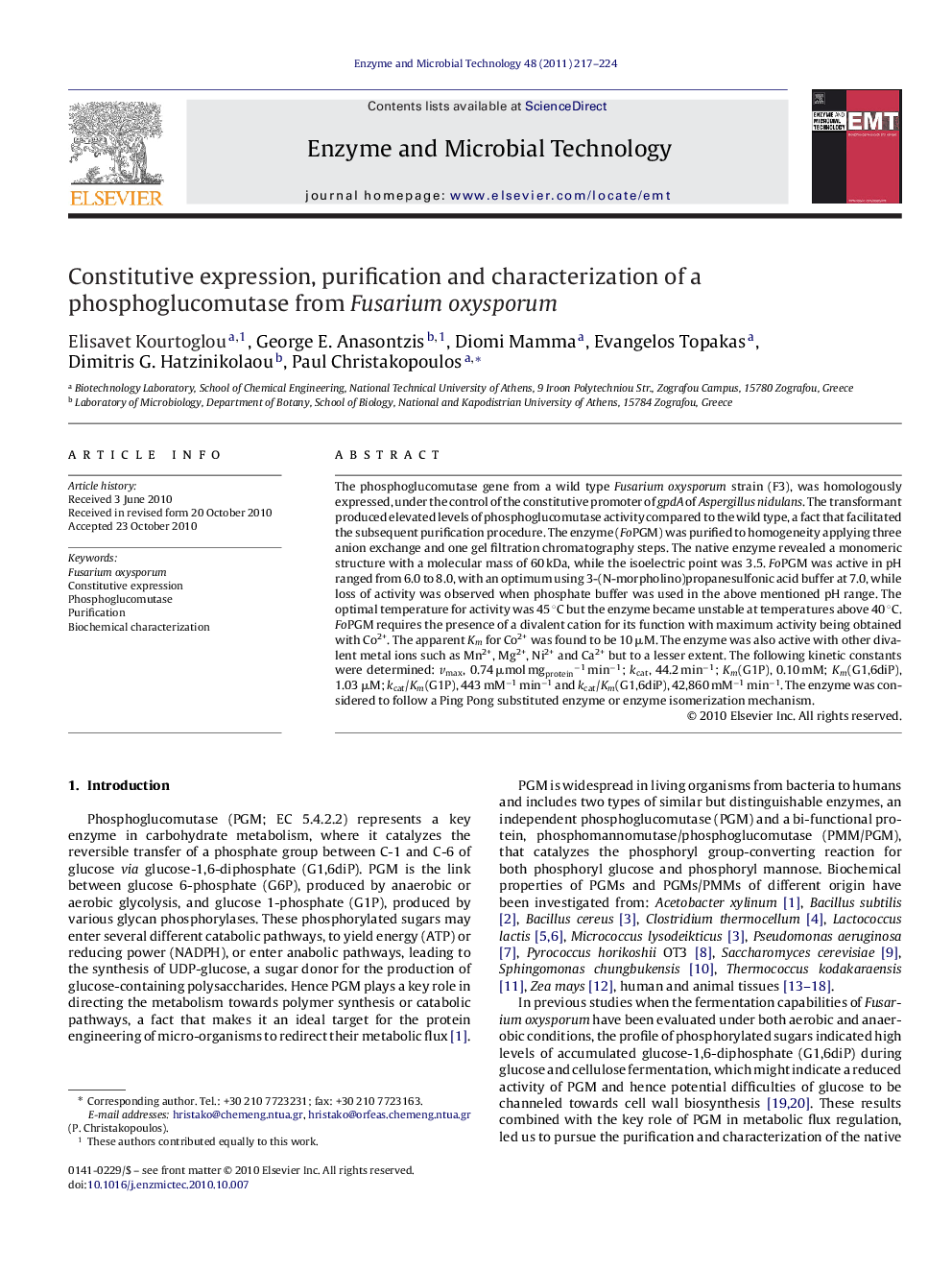| Article ID | Journal | Published Year | Pages | File Type |
|---|---|---|---|---|
| 10233092 | Enzyme and Microbial Technology | 2011 | 8 Pages |
Abstract
The phosphoglucomutase gene from a wild type Fusarium oxysporum strain (F3), was homologously expressed, under the control of the constitutive promoter of gpdA of Aspergillus nidulans. The transformant produced elevated levels of phosphoglucomutase activity compared to the wild type, a fact that facilitated the subsequent purification procedure. The enzyme (FoPGM) was purified to homogeneity applying three anion exchange and one gel filtration chromatography steps. The native enzyme revealed a monomeric structure with a molecular mass of 60 kDa, while the isoelectric point was 3.5. FoPGM was active in pH ranged from 6.0 to 8.0, with an optimum using 3-(N-morpholino)propanesulfonic acid buffer at 7.0, while loss of activity was observed when phosphate buffer was used in the above mentioned pH range. The optimal temperature for activity was 45 °C but the enzyme became unstable at temperatures above 40 °C. FoPGM requires the presence of a divalent cation for its function with maximum activity being obtained with Co2+. The apparent Km for Co2+ was found to be 10 μM. The enzyme was also active with other divalent metal ions such as Mn2+, Mg2+, Ni2+ and Ca2+ but to a lesser extent. The following kinetic constants were determined: vmax, 0.74 μmol mgproteinâ1 minâ1; kcat, 44.2 minâ1; Km(G1P), 0.10 mM; Km(G1,6diP), 1.03 μM; kcat/Km(G1P), 443 mMâ1 minâ1 and kcat/Km(G1,6diP), 42,860 mMâ1 minâ1. The enzyme was considered to follow a Ping Pong substituted enzyme or enzyme isomerization mechanism.
Keywords
Related Topics
Physical Sciences and Engineering
Chemical Engineering
Bioengineering
Authors
Elisavet Kourtoglou, George E. Anasontzis, Diomi Mamma, Evangelos Topakas, Dimitris G. Hatzinikolaou, Paul Christakopoulos,
